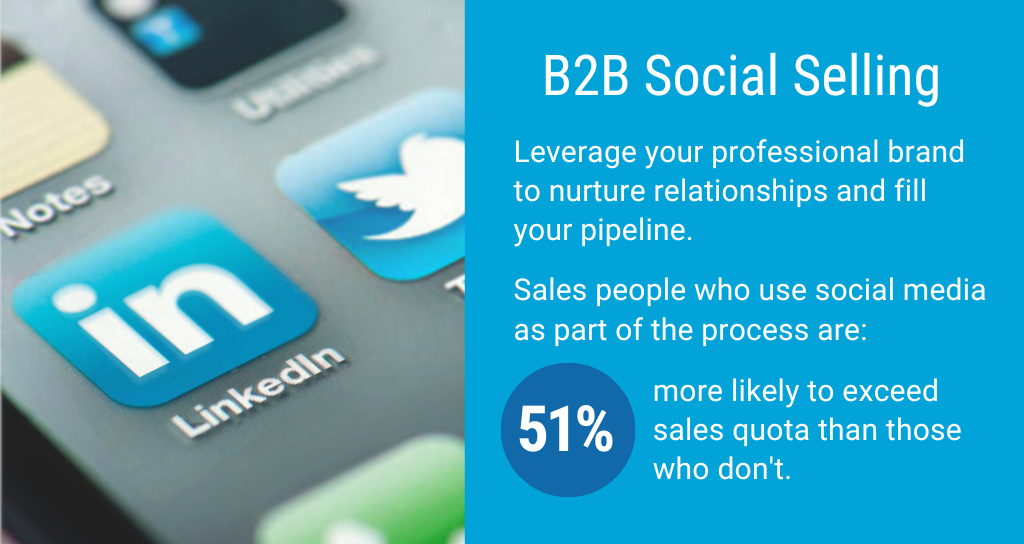
Software-as-a-Service (SaaS) solutions have become essential to almost all businesses. The worldwide SaaS market is presently valued at approximately $3 trillion and, according to projections by McKinsey, has the potential to skyrocket to $10 trillion by 2030. Technological advancements, changing work environments, and increased demand for digital solutions have exploded the market opportunity. The pandemic certainly helped accelerate adoption, enabling remote workers and distributed teams to collaborate, communicate, and be more productive. In the face of a recession, conventional wisdom might predict decreased spending, yet Gartner found the reverse in a survey of executives, who said the plan was to increase investment in digital technologies. That corresponds with a survey of more than 700 IT and security professionals by BetterCloud, which demonstrated that net growth is still up 18% this year even with a slowing pace of SaaS adoptions. What else is expected in 2023? In this roundup, we look at top trends expected to affect SaaS sales — with a particular focus on those impacting the workplace and sales talent — as SaaS companies continue to carve new global pathways.
Trend #1 — The Ascent of AI
Artificial Intelligence (AI) is making significant strides across industries. The proportion of companies adopting AI more than doubled between 2017 and 2022, according to McKinsey & Company, with companies tapping AI to decrease costs and increase revenues.
AI is expected to change SaaS sales by streamlining processes and improving decision-making, ultimately enhancing efficiency and accuracy in sales efforts. AI-powered tools, such as chatbots and predictive analytics, are being used to craft marketing messaging and to better understand customers, providing insights into their needs and preferences. AI is also being used to automate repetitive tasks, allowing sales teams to focus on what they do best: connecting with clients and closing deals.
As more AI tools are integrated into sales strategies, SaaS companies will need to navigate the many system and solution options aimed at enhancing and improving operations. In turn, companies will need to invest in training team members to effectively use AI tools, ensuring they are equipped to leverage the technology for maximum impact.
Trend #2 — The Niche Solution: Vertical SaaS
Horizontal SaaS, which targets solving general challenges or streamlining universal processes shared across industries and sectors, has dominated the growth of the SaaS industry. Solutions include customer relationship management (CRM) platforms and collaboration and marketing tools. These products are versatile and adaptable, catering to a wide range of customers with diverse requirements, but the market is well-established and becoming saturated. As horizontal SaaS matures, investors are shifting attention to vertical SaaS.
In 2023, the direction and momentum are clearly pointing toward vertical SaaS — software solutions that are specifically designed for a particular industry or sector, addressing unique challenges and requirements associated with that niche. By focusing on a particular vertical market, vertical SaaS companies can meet the demand for unique customer solutions and better serve a target market. The industry possibilities are booming with the capital to back it up: Vertical SaaS market capitalization reached $650 billion in 2022, according to Forrester, reflecting the push in the industry toward better customer satisfaction.
Vertical SaaS solutions are a salesperson’s dream — a targeted value proposition, a chance to demonstrate a deeper understanding of customers’ specific needs and pain points within a select industry and increase focus on customer satisfaction. Some examples of vertical SaaS solutions include Veeva Systems, tailored for the life sciences industry, offering tools for customer relationship management (CRM), content management, and collaboration; Procore, for the construction industry to streamline project management, document control, and financial management; and Clio, designed for law firms and providing case management, time tracking, billing, and client collaboration tools.
Trend #3 — Flexible, Personalized Pricing Models
As the SaaS sector continues to mature, one way SaaS companies are building relationships to reduce churn and sustain growth is by offering more customized pricing options that cater to the unique needs and preferences of individual customers. This approach allows businesses to provide tailored solutions, ensuring that clients only pay for the features and services they require, resulting in a better value proposition and enhanced customer satisfaction.
Flexible, personalized pricing models include pay-as-you-go, customized bundle, and sliding-scale pricing as well as add-on services. Customers can opt-in for additional services, such as premium support, custom integrations, or dedicated account management on top of their base subscription.
This trend toward flexible, personalized SaaS pricing demonstrates a growing understanding that customers have diverse needs and preferences, and a one-size-fits-all approach may not be the most effective way to drive customer satisfaction and long-term growth. By offering more customized pricing options, you can better cater to your target audience and deliver a more compelling value proposition.
Trend #4 — Social Selling
Sales professionals who use social media as part of their process are 51% more likely to exceed their sales quotas compared with those who don’t, according to LinkedIn.
SaaS companies can leverage social selling to build brand awareness, nurture relationships, and drive sales. By joining relevant groups and discussions and participating in industry-specific forums and online communities, SaaS sales team members can interact with potential customers and establish themselves as helpful resources and credible experts. Engaging in conversations – responding to comments, questions, and concerns – and sharing valuable content and insightful information helps position you as a thought leader, fosters trust, and enables you to identify new business opportunities and generate leads.
With social listening tools, your company can track mentions of your brand, your competitors, and industry trends, as they can be integrated into CRM systems or sales software. You can automatically track leads, update prospect information, and measure the impact of your social selling efforts on your sales pipeline. Tracking performance using key metrics such as engagement, reach, and conversions provides the means to refine your approach, test new strategies, and improve the effectiveness of your social selling initiatives. Automating the monitoring of social media in B2B selling can save time, improve efficiency, and help your sales and marketing teams stay informed about relevant conversations and opportunities in your industry.

Trend #5 — Remote Selling and Virtual Sales Teams
The rise of remote work led to increased demand for collaboration and communication tools, creating significant growth for SaaS companies. In turn, remote selling and virtual sales teams have become more of the norm in SaaS sales to connect with clients from virtually anywhere. And although some large companies made big announcements last year about their retreat from remote work since COVID-19 impacts had slowed, almost 30% of private-sector employers, or half of the U.S. workforce, have adopted a hybrid model, and another 10% are completely remote, according to the U.S. Bureau of Labor Statistics.
Remote selling offers numerous benefits, such as reduced overhead costs and the ability to tap into a larger talent pool. As well, remote jobs attract applicants: In looking at job posts in 2022, LinkedIn found that by September, posts for remote jobs fell to 14%, from 20% in February, but those posts received 52% of all U.S. applications on the platform. Employees want remote work, which of course presents challenges. To effectively manage and motivate remote SaaS sales teams, managers can sharpen their strategies by:
- Establishing clear communication channels and adapting technology solutions. Ensure the team has access to a range of reliable communication tools (e.g., video conferencing, instant messaging) to stay connected and collaborate effectively, and provide clear guidelines on communication standards, time off, and meeting schedules. These guidelines would seem to be givens, but as Google found in a two-year study of more than 5,000 employees, “Norms set clear expectations for how your team works together… but they’re often assumed rather than explicitly stated, leaving opportunities for confusion.”
- Setting measurable goals and tracking progress. Performance indicators need to be clearly defined, and project management tools engaged to monitor progress, to ensure that your team remains focused on their objectives and can easily identify areas for improvement.
- Fostering a strong team culture. Building camaraderie among remote sales teams can come in many forms, such as organizing virtual team-building activities, regular group check-ins, in-person retreats, remote games, scheduled venting or role-playing sessions, and fun. This helps create a sense of unity and shared purpose, which is crucial for nurturing collaboration and keeping the team motivated and productive.
In a world increasingly functioning in the cloud, the “as-a-service” types of businesses have diversified and proliferated — from SaaS to PaaS (platform as a service) and IaaS (infrastructure as service), creating intense competition for skilled SaaS sales professionals with other software and technology companies, cloud-based or otherwise.
Trend #6 — Challenges of Hiring and Retaining SaaS Sales Employees
For one, finding candidates with the right mix of technical and soft skills can be difficult. The SaaS landscape is constantly evolving, with new cutting-edge advances and best practices regularly emerging. This requires employees to be agile and adaptable, working to continuously update their skills ad. At the same time, fast-growth SaaS companies typically have high expectations for performance, leading to increased pressure on employees to deliver outstanding results.
As the competition for talent grows, central to a SaaS company’s ability to attract and retain employees is developing and sustaining a positive workplace culture — an employee-centric culture — to set your company apart and appeal to the best candidates in the industry. Employee-centric companies attract talent and stand out from the competition in seven key ways, including offering competitive compensation and benefits packages; investing in employee training and development programs to upskill and reskill; providing mentorship, and clear career advancement paths; and ensuring a well-structured onboarding process is in place to help employees feel supported and engaged from the start, reducing the likelihood of early turnover.
Trend #7 — Diversity & Inclusion in SaaS
As a retention-and-recruitment trend all its own, fostering a diverse and inclusive work environment will continue to play a vital role in employee satisfaction and attracting and retaining top talent. By valuing diversity and instituting an inclusive workplace, SaaS organizations can build a competitive advantage and achieve long-term success in several ways:
- Innovation: A diverse workforce brings a variety of perspectives and experiences, which can lead to more innovative solutions to problems. A study by McKinsey found that companies in the top quartile for ethnic and cultural diversity in their executive teams were 33% more likely to have above-average profitability than companies in the bottom quartile.
- Customer satisfaction: A diverse workforce can help a SaaS organization better understand and connect with a diverse customer base. According to a study by the Harvard Business Review, companies with above-average diversity in leadership positions were 70% more likely to capture new markets and 45% more likely to improve market share.
- Employee retention and satisfaction: A diverse and inclusive workplace can lead to higher employee satisfaction and retention. A report by Deloitte found that inclusive companies are 1.7 times more likely to be innovation leaders in their market and 2.3 times more likely to be cash-flow positive.
- Better decision-making: A diverse team brings a variety of perspectives to the decision-making process. A study by Cloverpop found that diverse teams make better decisions 87% of the time.
- Legal compliance: SaaS organizations that prioritize diversity and inclusion can comply with anti-discrimination laws and regulations, avoiding legal risks and negative publicity. For example, in 2020, the U.S. Securities and Exchange Commission (SEC) adopted new rules requiring public companies to disclose their human capital resources, including diversity statistics, as part of their annual reports.
We’ll Find You SaaS Sales Leaders To Expedite Growth
Staying ahead of the trends means your company can adapt and be well-positioned to accelerate growth in a highly competitive landscape. Whether you are ready to launch, pivot in a new direction, or looking for a big sales lift, you need sales leadership with the talent, skills, and knowledge to achieve your business goals. With our vast network, precision methodology, and 3:1 send-out-to-hire ratio, you’ll only get sales candidates that you can hire with confidence.
To learn more and discover the DANA Difference, schedule a call with us today.

